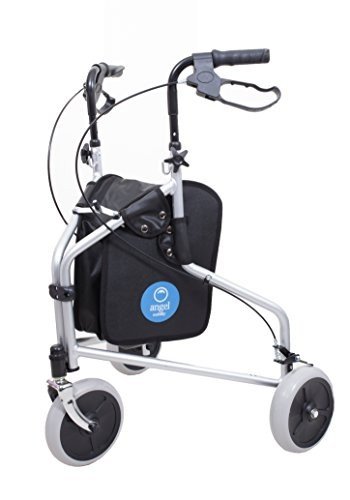An In-Depth Look Into The Future What's The Mobility Scooter Industry Look Like In 10 Years?

A Comprehensive Guide to Buying a Mobility Scooter
Mobility scooters have actually become an important tool for numerous people wanting to boost their self-reliance and mobility. With a vast range of designs and functions available, choosing the ideal mobility scooter can be daunting. This article supplies an informative guide to help consumers browse their choices, examine their requirements, and make a notified purchase.
Comprehending Mobility Scooters
Mobility scooters are electric lorries created for individuals who experience mobility obstacles. They are particularly useful for senior citizens, those with impairments, or individuals recovering from injuries. Mobility scooters can differ widely in regards to design, functions, and prices.
Types of Mobility Scooters
Before starting a purchase, it's important to comprehend the different kinds of mobility scooter s available:
Three-Wheel Scooters:
- Generally more maneuverable in tight areas
- Lightweight and portable
- Ideal for indoor usage
Four-Wheel Scooters:
- Offer greater stability and balance
- Appropriate for outside use over various terrains
- Usually have a longer battery life
Foldable/Portable Scooters:
- Designed to be quickly transferred and saved
- Can typically fit in the trunk of a vehicle
- Perfect for those who travel regularly
Heavy-Duty Scooters:
- Built to accommodate bigger individuals
- Frequently featured more robust features for outdoor use
- Typically geared up with bigger batteries for prolonged variety
Aspects to Consider When Buying a Mobility Scooter
1. Weight Capacity
Choose a mobility scooter that can support the user's weight. Many scooters have a weight limitation ranging from 250 to 500 pounds. It is important to guarantee that the scooter can accommodate the user conveniently.
2. Variety and Battery Life
The range is how far the mobility scooter can take a trip on a single charge. Typical varieties differ between 10 to 30 miles. Consider the user's day-to-day activities and choose a scooter with a suitable range.
3. Scooter Dimensions
Consider the size of the scooter, including its weight and measurements. A more compact scooter might be ideal for narrow corridors and tight areas, while bigger designs offer extra stability and convenience.
4. Surface Capability
Examine where the scooter will mainly be used. If the user prepares to take a trip mostly on pavement, a lightweight model may be enough. However, if the user requires to traverse gravel or irregular surfaces, think about a four-wheel scooter developed for off-road use.
Top Features to Look For
Comfort
- Adjustable Seats: Look for scooters with cushioned and height-adjustable seats to make sure convenience throughout travel.
- Armrests: These improve safety and support while browsing.
Safety and Visibility
- Headlights and Taillights: Essential for nighttime use.
- Turn Signals and Reflectors: Improve presence and security while on the road.
User-Friendly Controls
- Joystick or Drive Controls: These need to be intuitive and simple to manipulate.
- Easy-to-Read Displays: A control panel that shows battery life, speed, and distance can boost the user experience.
Extra Features
- Storage Compartments: These use included convenience for carrying personal items while on the go.
- Weather condition Protection: Consider designs with rain covers or windscreens if used in variable climate condition.
Cost Considerations
When budgeting for a mobility scooter, costs can vary anywhere from ₤ 500 to over ₤ 5,000 depending upon the design, functions, and brand name. Extra costs might include:
- Extended Warranty: Protects against problems and can save money in the long run.
- Accessories: Optional features, such as upgraded seats, lights, or storage services.
| Function | Expense Range |
|---|---|
| Standard Models | ₤ 500 - ₤ 1,500 |
| Mid-Range Models | ₤ 1,500 - ₤ 3,000 |
| High-End Models | ₤ 3,000 - ₤ 5,000 |
Funding Options
Numerous retailers offer funding strategies, and some city government efforts might supply grants or assistance for those in requirement. Investigate possible monetary assistance with community resources or mobility service companies.
FAQs about Buying a Mobility Scooter
What is the difference in between a mobility scooter and a wheelchair?
Mobility scooters are motorized and enable users to browse independently, while wheelchairs might require physical assistance or manual operation.
How do I keep a mobility scooter?
Regular maintenance includes examining battery life, cleaning up the scooter, and inspecting tires and brakes. Constantly refer to the user handbook for particular standards.
Can mobility scooters be used inside?
Yes, lots of designs are developed for both indoor and outdoor usage. However, three-wheel scooters tend to be much better suited for indoor navigation due to their tighter turning radius.
Are mobility scooters covered by insurance coverage?
Some insurance coverage prepares cover a portion of the costs for mobility scooters if they are deemed clinically necessary. Contact your service provider for specific details.
How quickly can a mobility scooter go?
The majority of mobility scooters have a maximum speed varying from 4 to 8 mph. Nevertheless, the suitable speed may vary depending on local regulations.
Purchasing a mobility scooter can considerably improve one's independence and lifestyle. By comprehending the types, functions, and expenses related to mobility scooters, potential purchasers can make knowledgeable choices that suit their needs and choices. Personalization and extensive research are key to making sure fulfillment with this essential investment.

